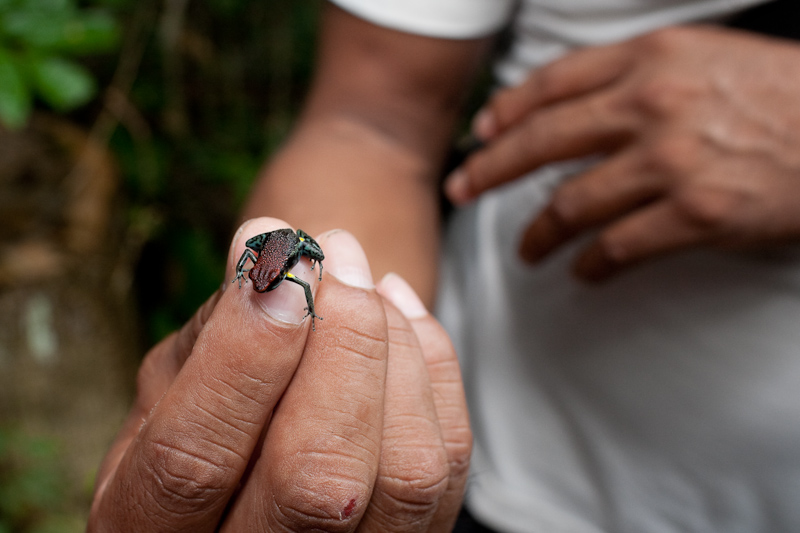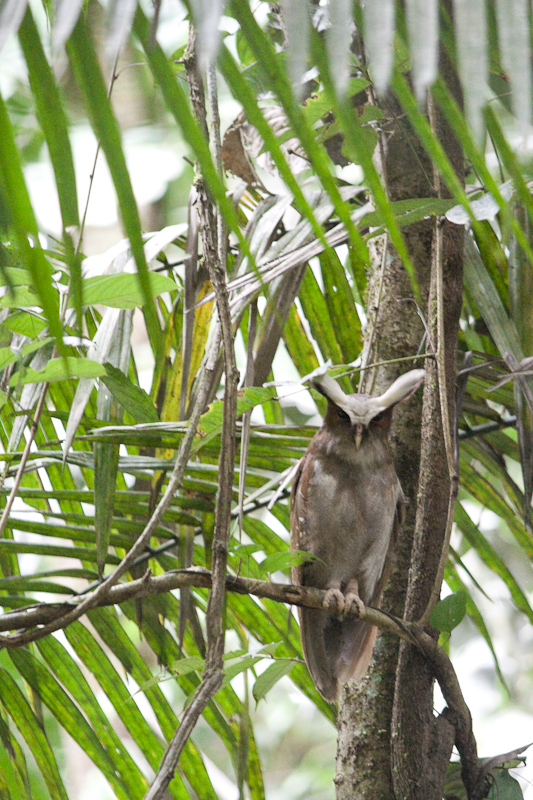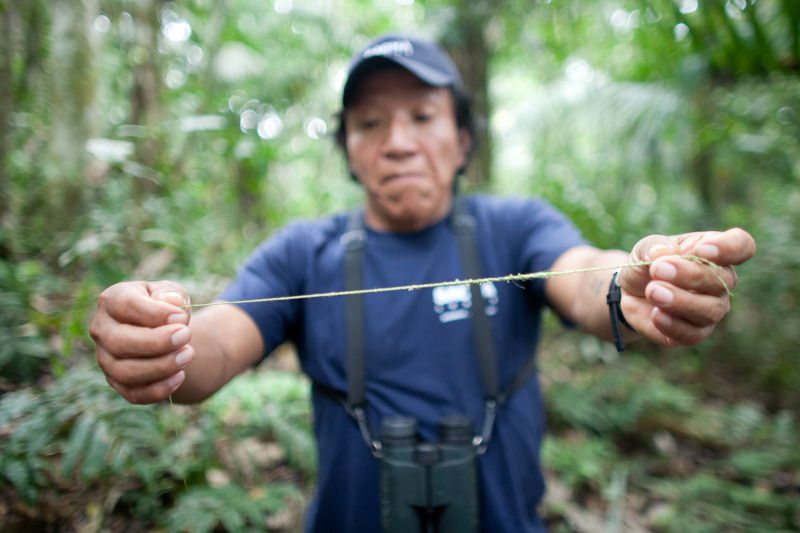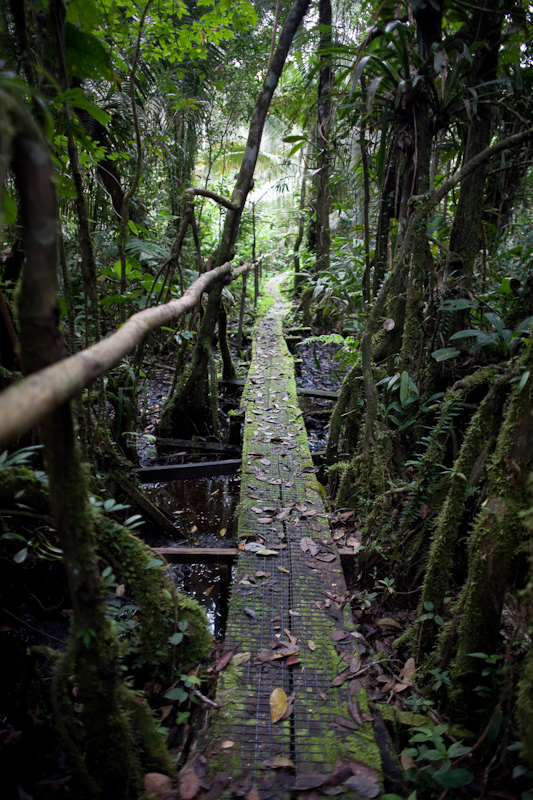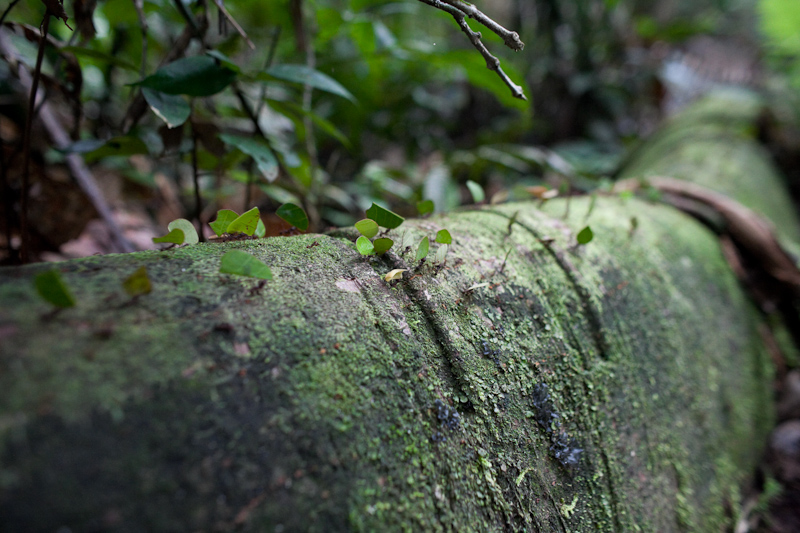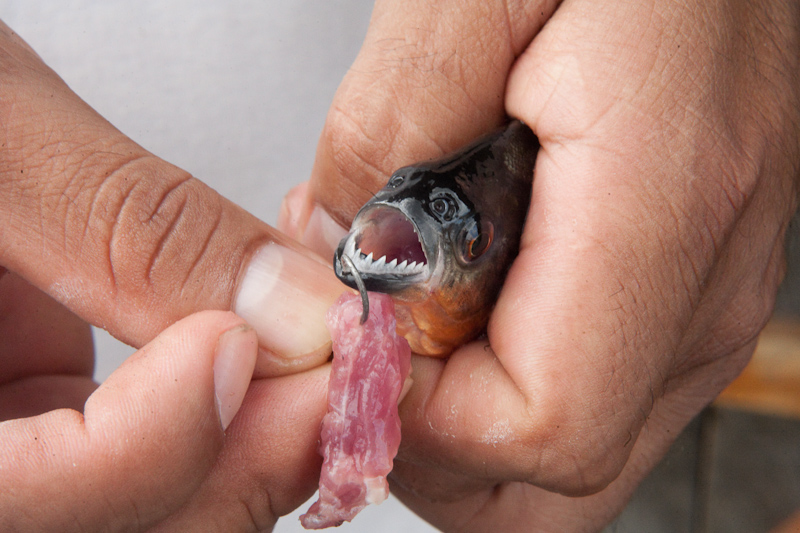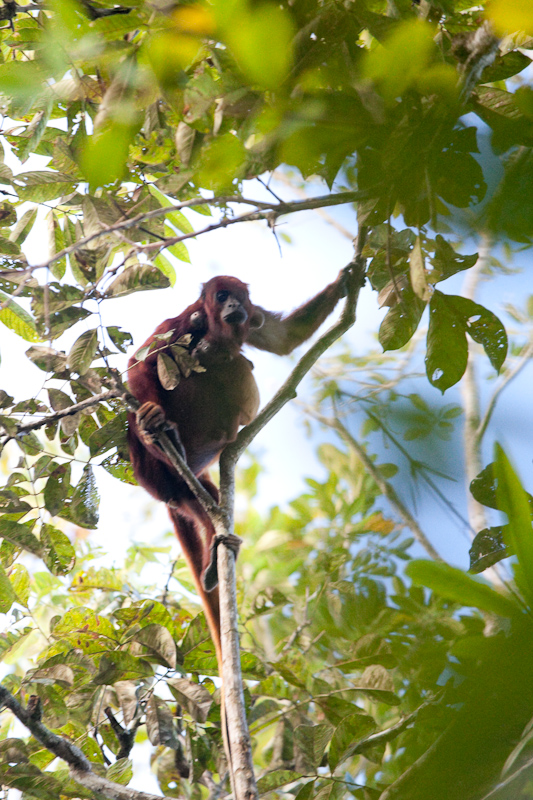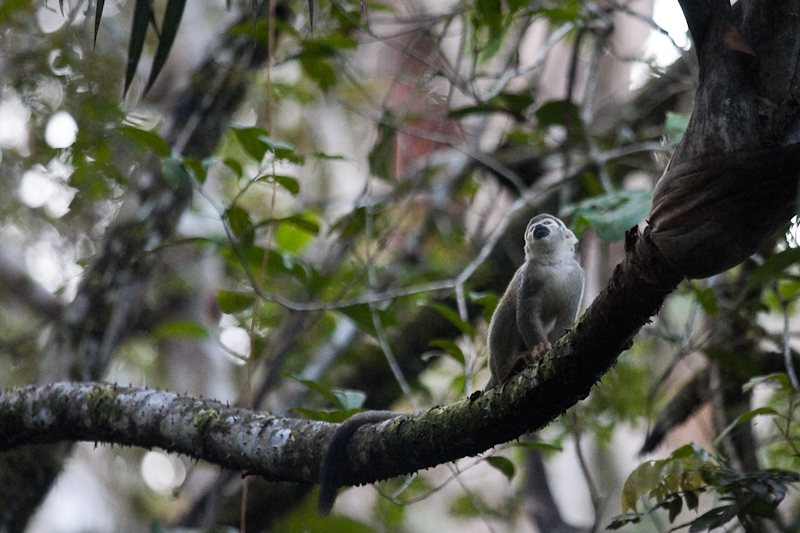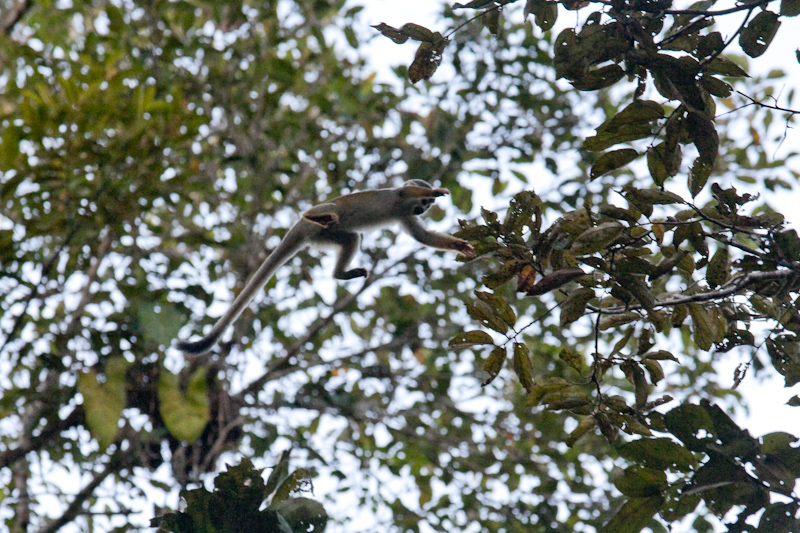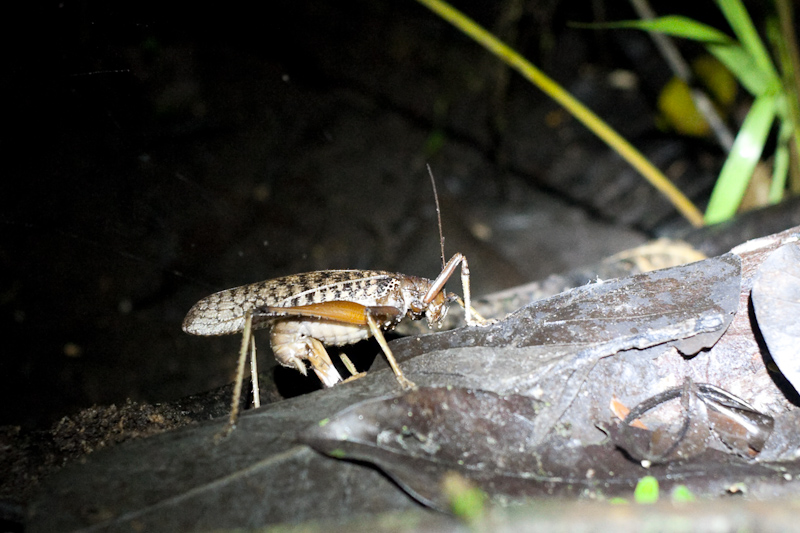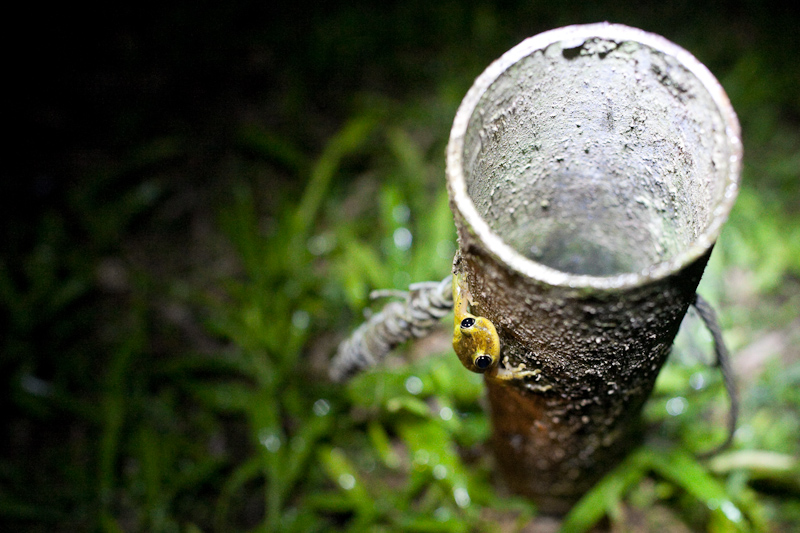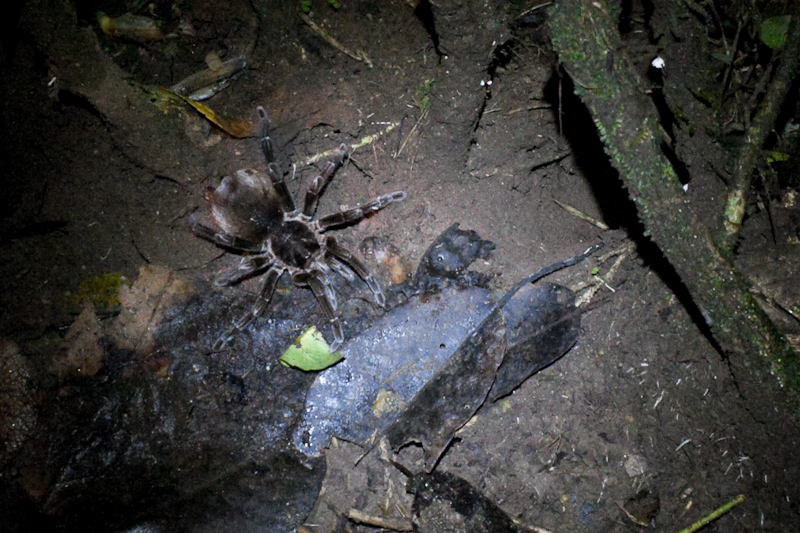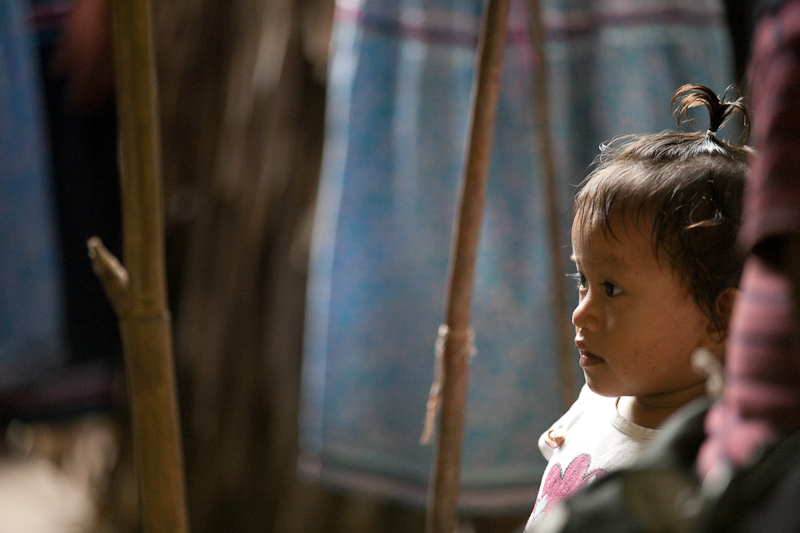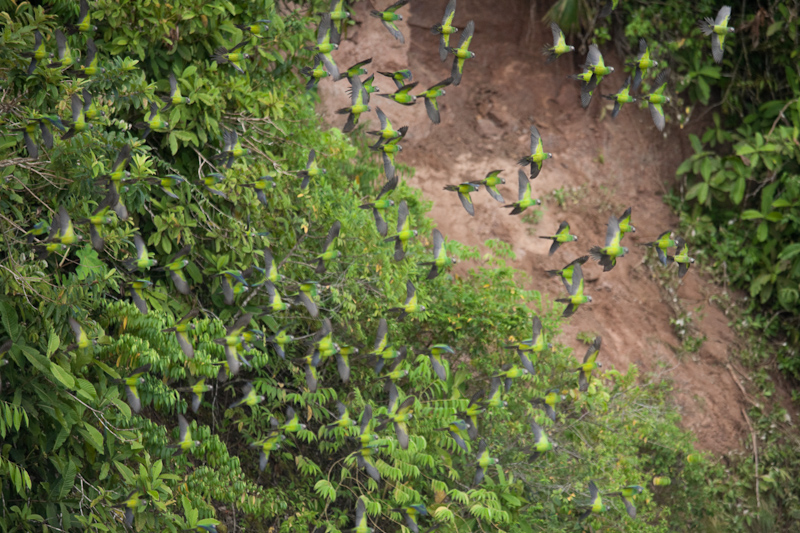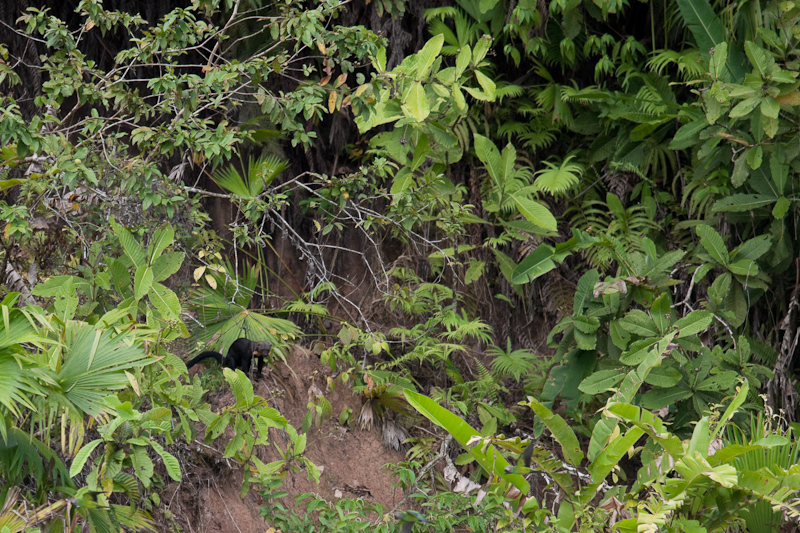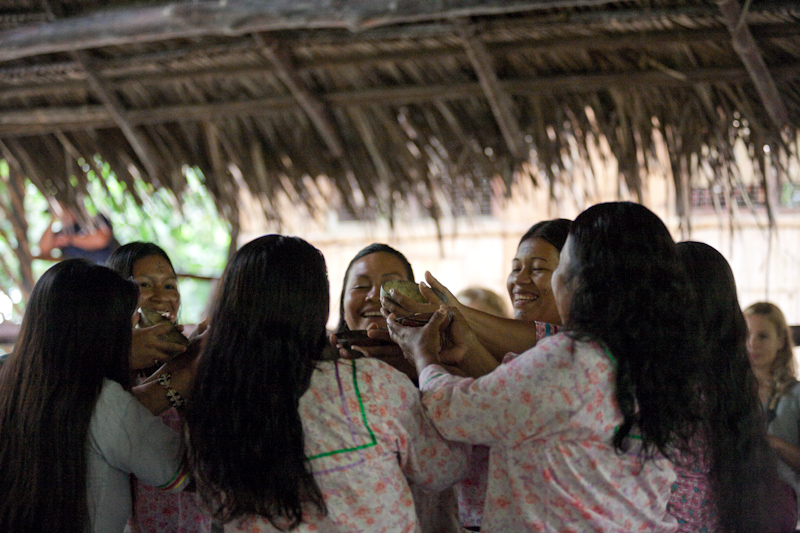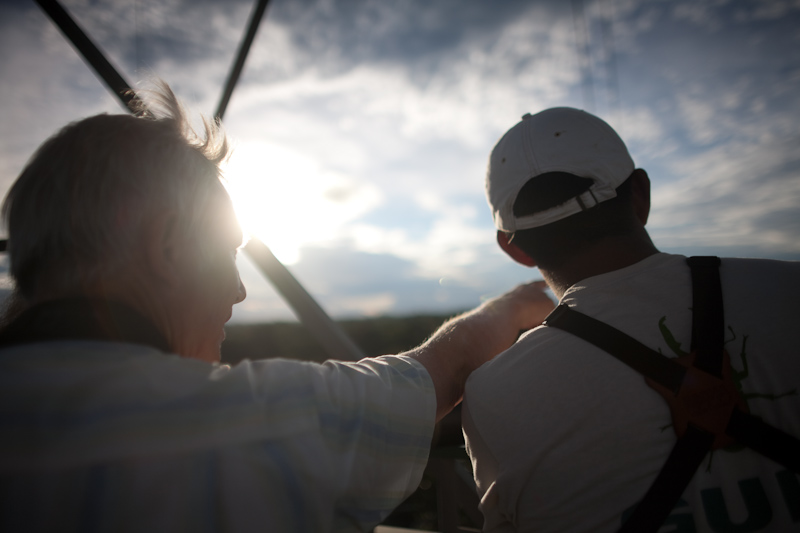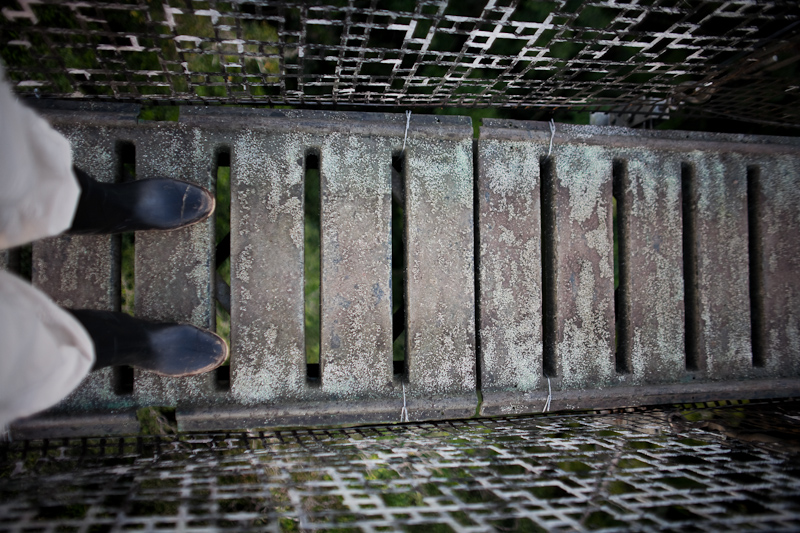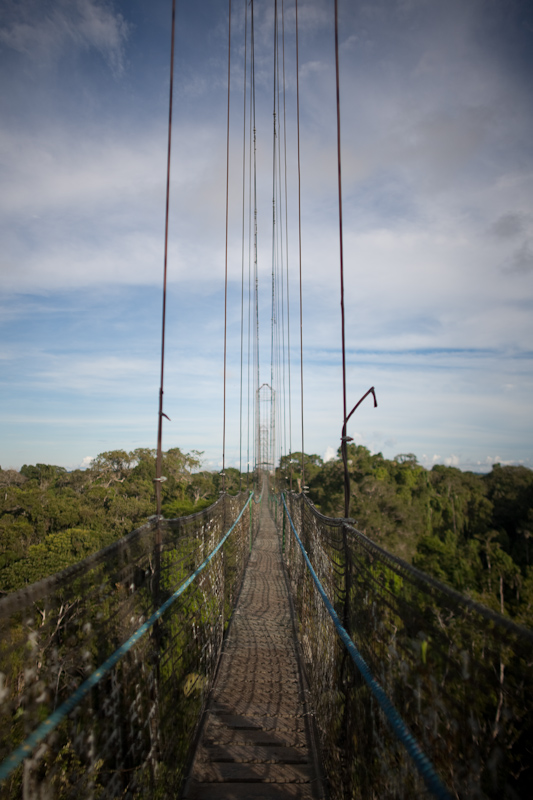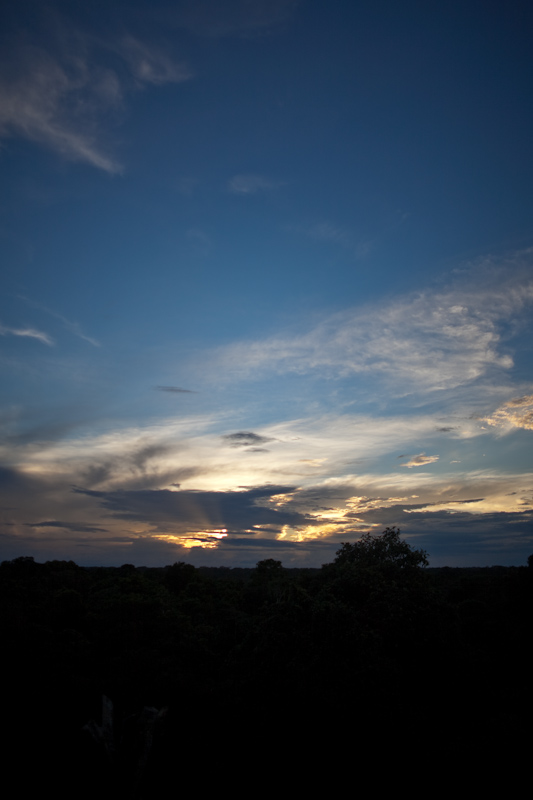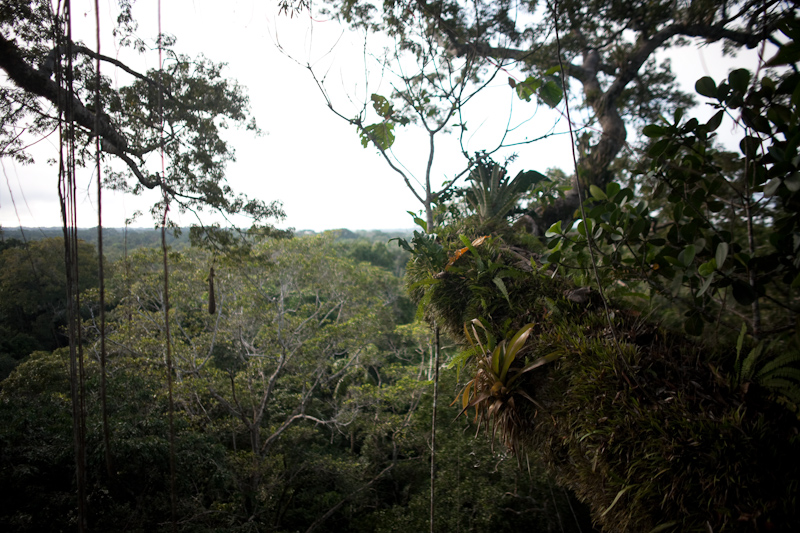
Back to the Ecuador photos from the Ecuadorian Amazon:
We climbed the wooden tower at the Sacha Lodge to see more birds and wildlife. The tower is built around a giant Kapok tree that is teeming with epiphytes, especially at the top. You spiral around the giant trunk as you climb the tower’s steps.
Our guide found a ruby poison dart frog (ameerega parvula). It was seriously impressive how adept he was at finding wildlife. It’s poisonous enough to kill a bunch of people.
A crested owl (lophostrix cristata). It reminded me of one of those reverse-perspective optical illusions where a face always appears to be staring at you. The owl would just subtly move its head to look in your direction.
We took a break for a little demo where Carlos made a string from a palm leaf.
A mossy walkway
Leafcutter ants traverse a large exposed root
We spent an hour in the afternoon fishing. I was the only person of our group who did not catch a fish. That’s not to say that there weren’t any fish – there were piranhas everywhere in the water but they cleverly ate the raw chicken off of my hook. You could feel them bite after less than a second. I think this was a red-eye piranha (serrasalmus rhombeus).
We went out again for an afternoon canoe ride after our little fishing excursion. This is a female red howler monkey (alouatta) with young attached and what I believe are giant cheek pouches probably full of food.
We continued along our canoe ride and heard a lot of rustling in the trees. It turns out there was a group of common squirrel monkeys (saimiri sciureus) nearby, moving around and foraging. We waited in the canoe for maybe half an hour and enjoyed the show.
At some point, all of the common squirrel monkeys needed to cross the waterway. One by one, they jumped across, usually after hesitating for a moment as if they were considering the prospect of falling below.
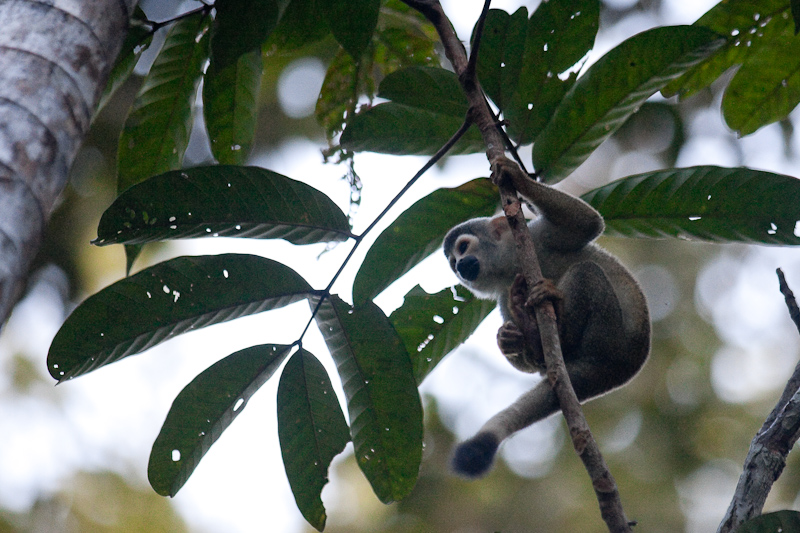 This one made it. They all seemed to be able to jump across pretty well – we didn’t see any monkeys fall but some of them missed their target but were able to grab on to a branch not far below their landing site.
This one made it. They all seemed to be able to jump across pretty well – we didn’t see any monkeys fall but some of them missed their target but were able to grab on to a branch not far below their landing site.
 After dinner, we went out with headlamps for a night hike to see the nocturnal creatures. Here’s a grasshopper/locust that had just finished molting.
After dinner, we went out with headlamps for a night hike to see the nocturnal creatures. Here’s a grasshopper/locust that had just finished molting.
And here’s one laying eggs in a dead branch
I believe this little guy was a glass frog (centrolenidae)
A very large burrowing bird-catching spider (selenotypus plumipes)
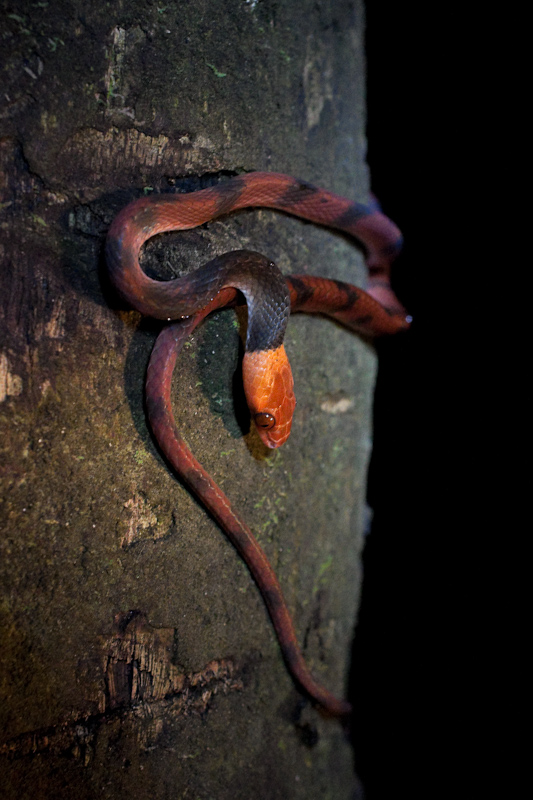 we didn’t see as many snakes as we’d hoped, but we did see this red vine snake (siphlophis compressus)
we didn’t see as many snakes as we’d hoped, but we did see this red vine snake (siphlophis compressus)

